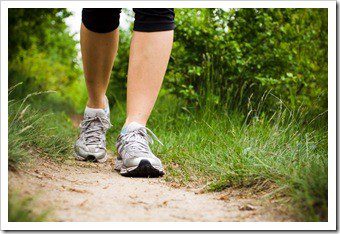
While some fitness enthusiasts relentlessly seek out the latest, trendiest exercise crazes, many others are returning to good, old-fashioned walking to help them feel great and get into shape. Whether enjoying the wonder of nature, or simply the company of a friend, walking can be a healthy, invigorating experience. And thanks to its convenience and simplicity, walking just might be right for you, too.
Benefits of Walking
You don’t need to become a member of an expensive gym to go walking. And except for a good pair of walking shoes, it requires virtually no equipment.
A sedentary lifestyle has a debilitating influence on people’s health as they age, therefore exercise is imperative. Walking accomplishes all of the following and more:
- Improves cardiovascular endurance
- Tones muscles of the lower body
- Burns calories: about 80 if walking 2 miles per hour, and about 107 if walking 4.5 miles per hour
- Reduces risk of heart disease
Selecting Shoes
The first item of business when beginning your walking program is to select the right pair of shoes. Too many people choose fashion over function when purchasing running shoes, not realizing that poor-fitting shoes can do more than hurt their stride; they can also lead to pain throughout the body.
- Make sure the shoes you purchase fit properly. The balls of your feet should rest exactly at the point where the toe end of the shoe bends during walking.
- Select shoes with plenty of cushioning in the soles to absorb the impact.
- Shop for sneakers at the end of the day or after a workout when your feet are generally at their largest. Wear the type of socks you usually wear during exercise.
- When trying on shoes, be sure to wear them for at least 10 minutes at the store.
Once you have purchased a pair of shoes, don’t walk them into the ground. While estimates vary as to when is the best time to replace old shoes, most experts agree that between 300 and 500 miles is optimal.
Getting Started
Walking just 12 minutes every other day can offer important health benefits. But in order to increase your longevity, try to eventually work up to 30 minutes, five days per week. Experts generally agree that to be considered “active,” adults should try to take 10,000 steps each day. Wearing a pedometer is an easy way to track your progress.
The following tips can help you get started on your walking regimen:
- Move your arms freely, in coordination with the opposite leg.
- Don’t stoop your head or look down as you walk. This will challenge the normal forward curve of your neck, which, in turn, will cause you to carry your weight improperly.
- Don’t carry weights or dumbbells while walking. They’re better used as a separate part of your exercise regimen.
- Expect a little soreness in the thighs and calves for the first week or two. If you experience more than soreness, check with your doctor of chiropractic.
- Walk briskly, with “purpose.” Simply sauntering, while relaxing and enjoyable, is not an effective form of cardiovascular exercise.
Of course, be sure to consult your doctor before beginning any exercise program.
Walking Surfaces
Some walking surfaces are better than others on your musculoskeletal system.
- Walking on a cushioned or rubberized track is ideal, because the cushioning of this type of track absorbs most of the impact of your walking. Many recreation centers offer this type of track free of charge.
- Grass is another good surface, but watch out for hidden dips or holes in the ground.
- Walking on a surface with no give, such as concrete or a mall floor, is not your best choice, because this type of surface will not absorb much of the impact your body will experience. If you do choose to walk on such a surface, be extra careful to select highly cushioned shoes.
Pain and Injury
While you may experience pain or injury in a particular area, such as a knee or a hip, the root of the problem may lie somewhere else. Injuries of this nature are not regional, or isolated, but systemic. A problem in the foot or ankle can create an imbalance in every step, leading to discomfort or injury that moves to the knees, hips, low back, or elsewhere.
If you, a family member or work colleague are a fitness fanatic or if you are just getting started with a new fitness routine, then remember that it is quite commoen to experience some muscle soreness but chronic or ongoing pain and soreness is something else. Getting a spinal health evaluation is a great place to start looking to help get you back into the swing of your walking and/or exercise routine. We can help you to customize a wellness program that is right for you and help keep you in top performance. Today’s research demonstrates that regular chiropractic care helps to boost all levels of athletic performance. From the weekend warrior to the fitness junky everyone that has a spine and nervous system can benefit from improving their overall function. If you haven’t had your spine and nervous system professionally evaluated or if has been a while since your last adjustment be sure to give our office a call today. You will be glad that you did.
For Your Health,
Dr. Joshua Salina
